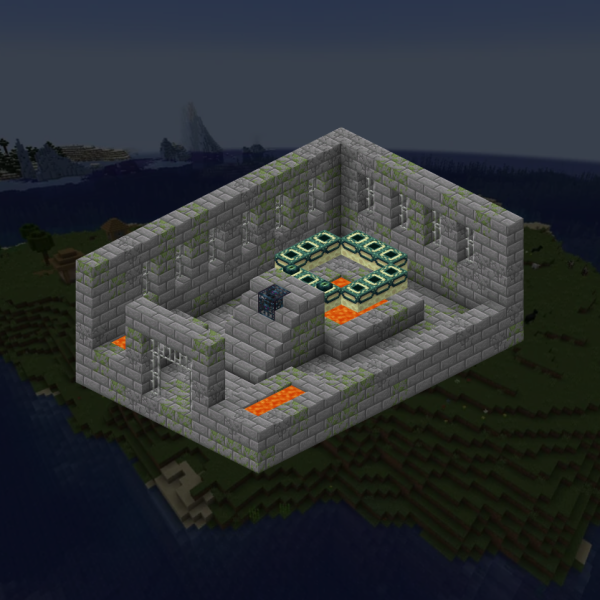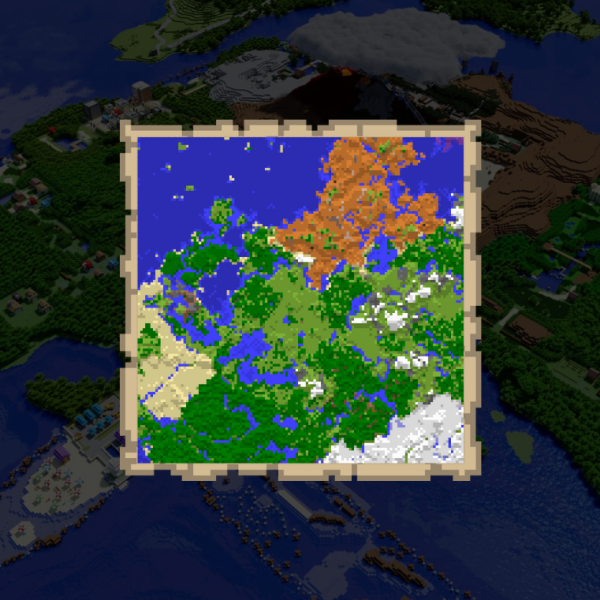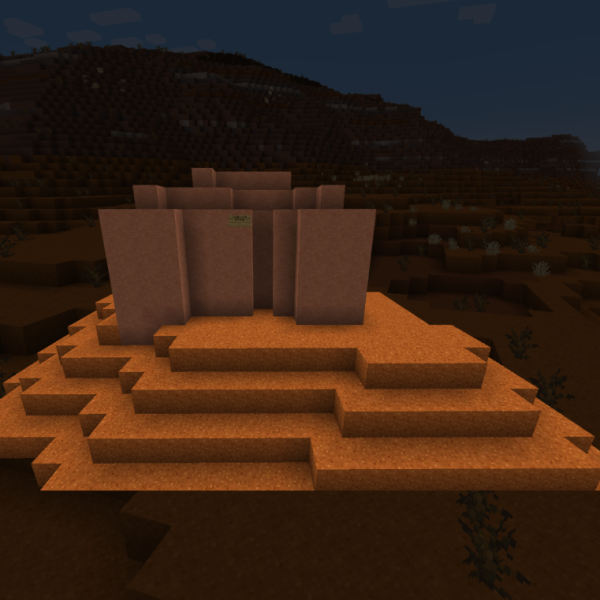The Complete Guide on How to Waterlog Blocks in Minecraft
Have you ever tried to build an awesome underwater base, only to spend hours fighting against the choppy, aggressive look of flowing water? Do you wish you could hide your farm’s irrigation so your crops look perfect? This cool building technique, called waterlogging, is exactly what you need.
It is a simple mechanic that lets water share the same space as certain furniture and building parts, making your builds cleaner and smarter. Waterlogged blocks are a game-changer for new builders and even veteran players looking for new ways to build.
This guide will walk you through everything you need to know about waterlogging in Minecraft, including what blocks to use, why it works, and how it can totally transform your worlds. Get ready to dive into the amazing world of hidden water.
Blocks in Minecraft: What They Are and How Many Types Exist
Minecraft blocks are the fundamental building blocks of the game’s world, with over 820 types that can be used for building, crafting, and mechanics. They are categorized by type, such as natural blocks (e.g., dirt, stone), decorative blocks (e.g., colored wool, terracotta), functional blocks (e.g., furnaces, chests), and redstone-powered blocks.
Natural and Building Blocks
These are the most common blocks, used for creating basic structures.
- Stone:
Pros: Abundant, used in many crafting recipes for tools and structures.
Cons: Can be basic and less visually interesting without customization. - Dirt:
Pros: Extremely common, useful for farming and can be transformed into other non-cube blocks.
Cons: Can be easily destroyed by water, has a limited number of uses. - Wood (all types):
Pros: Easy to obtain, used for crafting a vast number of items like tools, furniture, and building materials.
Cons: Can burn easily, making fire-prone structures a risk. - Sand and Gravel:
Pros: Used in specific recipes, such as sandstone and concrete.
Cons: Affected by gravity, so they can fall and break, requiring careful placement.
Decorative and Functional Blocks
- Terracotta (and dyed variants):
Pros: Wide color palette for custom designs, durable.
Cons: Can be tedious to craft in bulk, and getting a specific color may require mining a lot of clay. - Glass (and stained glass):
Pros: Transparent, allows light into structures, and has a wide range of colors.
Cons: Breaks easily, can be costly to produce in large quantities. - Redstone blocks:
Pros: Can be used to power and automate mechanisms, and used for intricate contraptions.
Cons: Requires learning the redstone mechanics, which can be complex for new players. - Furnace and Chest:
Pros: Essential for smelting ores and storing items.
Cons: Chests have limited inventory space, requiring multiple chests for storage.
Specialized and Unique Blocks
- Obsidian:
Pros: Extremely durable, used to make portals to other dimensions, like the Nether.
Cons: Difficult to mine, requiring a diamond pickaxe. - Glowstone:
Pros: Provides light without using a torch, useful for creating safe zones in the dark.
Cons: Can be found in the Nether, which is a dangerous dimension, and emits light but does not produce a full light level. - Amethyst blocks and geodes:
Pros: Create beautiful decorative blocks with unique sound effects.
Cons: Extremely rare, can only be found in specific locations. - Structure Blocks:
Pros: Can be used to save and load structures, which is useful for map making and complex builds.
Cons: Not available in survival mode, so they cannot be used by all players.
What is Waterlogging in Minecraft
Waterlogging is the Minecraft mechanic that allows certain non cube blocks to share a space with a water source or flowing water. This means blocks like slabs, stairs, fences, and even leaves can be partially or fully filled with water while still retaining their original function and appearance. It enables new building possibilities, such as creating underwater farms or more complex redstone contraptions.
Key Features of Waterlogging
- Sharing space: Water and the non cube block coexist in the same space.
- Block types: Supports many block types, including slabs, stairs, fences, doors, leaves, and more.
- Water flow: Water source blocks will cause water to flow out of the waterlogged blocks, while flowing water can move through some waterlogged blocks.
- Unique properties: Some full blocks, like leaves and mangrove roots, can also be waterlogged but will contain the water instead of letting it flow out.
- New applications: Enables new building and flowing farming techniques, such as underwater farms and intricate redstone mechanisms.
How to Waterlog a Block
- Place the non cube block you want to waterlog (e.g., a slab or stairs).
- Place a water source (using a water bucket) in a block adjacent to the block you want to waterlog.
- The water will spread into the non cube block, and the block will become waterlogged. This is how to waterlog blocks in Minecraft.
What Blocks Can Be Waterlogged in Minecraft
A wide variety of blocks can be waterlogged in Minecraft, with the exact list differing between Bedrock and Java Editions. In general, many non cube blocks like slabs, stairs, and fences can be waterlogged. Additionally, other non cube blocks like ladders, chests, and signs can be waterlogged, with unique behaviors such as candles unlighting and campfires unlighting in both editions, but some blocks, like most flowers and crops, are not waterlogged and will be destroyed by water.
Examples of Waterloggable Blocks by Edition
- Both Bedrock and Java Editions: Slabs, stairs, fences, and fence gates, iron bars, glass panes, signs, trapdoors, leaves, campfires, candles, hoppers, lecterns, rail variants, scaffolding, sculk sensors, lightning rods.
- Bedrock Edition only (or with different behavior): Anvils, beacons, beds, bells, doors, piston heads, enchanting tables, grindstones, levers, shulker boxes, coral, flower pots, stonecutters.
- Blocks that are not waterlogged: Flowers, crops, torches, cacti, cobwebs, saplings, and decorative plants that are destroyed by water.
What Are the Uses of Waterlogged Blocks
Waterlogged blocks are blocks that can coexist with water inside them, and their primary uses are for building, farming, and creating decorative water features. They allow for underwater builds without blocking water flow and are used to hydrate crops, create unique aesthetics like bathtubs or fountains, and manage water in redstone contraptions.
Uses in Building and Decoration
- Underwater builds
- Decorative water features
- Unique aesthetics
Uses in Farming and Survival
- Hydrating farmland
- Keeping coral alive
- Preventing freezing
Other Uses
- Redstone contraptions
- Water management
- Cobblestone generators
How to Un-Waterlog Blocks in Minecraft
- Using a Sponge: Absorbs nearby water and can be reused after drying in a furnace.
- Using Torches: Works for single water source blocks by placing and breaking a torch.
- Using Mods or Plugins: Tools like WorldEdit allow draining or un-waterlogging with commands.
Difference Between Waterlogging and Regular Water Placement
The core difference is that waterlogging allows non cube blocks to coexist with water, whereas regular water occupies an entire empty block.
- Regular Water: Needs full empty block space.
- Waterlogging: Allows water and block to coexist, especially useful for non-cube blocks.
Functional Uses of Waterlogged Blocks in Minecraft
- Farming and Irrigation: Hidden water sources for hydrated farmland.
- Construction and Defense: Explosion proof, breathable underwater builds.
- Redstone and Mechanics: Enables hidden and underwater redstone setups.
Limitations of Waterlogged Blocks in Minecraft
- Inconsistent behavior between Java and Bedrock editions.
- Redstone complications and limited item transport.
- Piston interactions often remove waterlogged state.
Important Tips for Waterlogging
- Know which blocks can be waterlogged.
- Use a bucket directly on non-cube blocks to waterlog or remove water.
- Java Edition allows air pockets with doors; Bedrock does not.
- Be mindful of unintended water flow and mob pathing.
Conclusion
Waterlogging is an essential and powerful mechanic for any Minecraft player looking to elevate their building and engineering skills. By understanding how to waterlog blocks in Minecraft, you can create seamless underwater habitats, efficient hidden farms, and sophisticated redstone contraptions. Grab your bucket and start experimenting with waterlogged blocks today!




